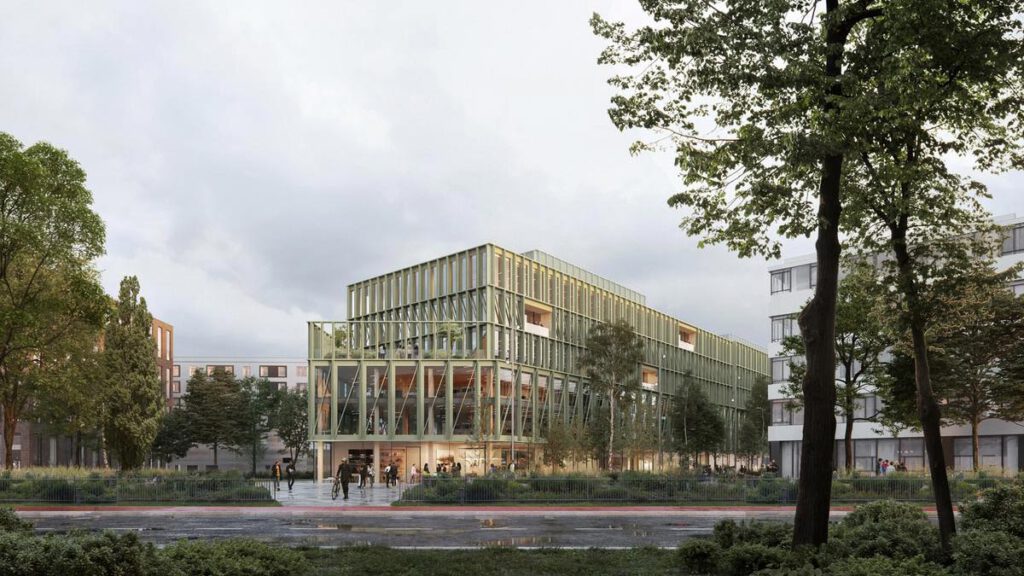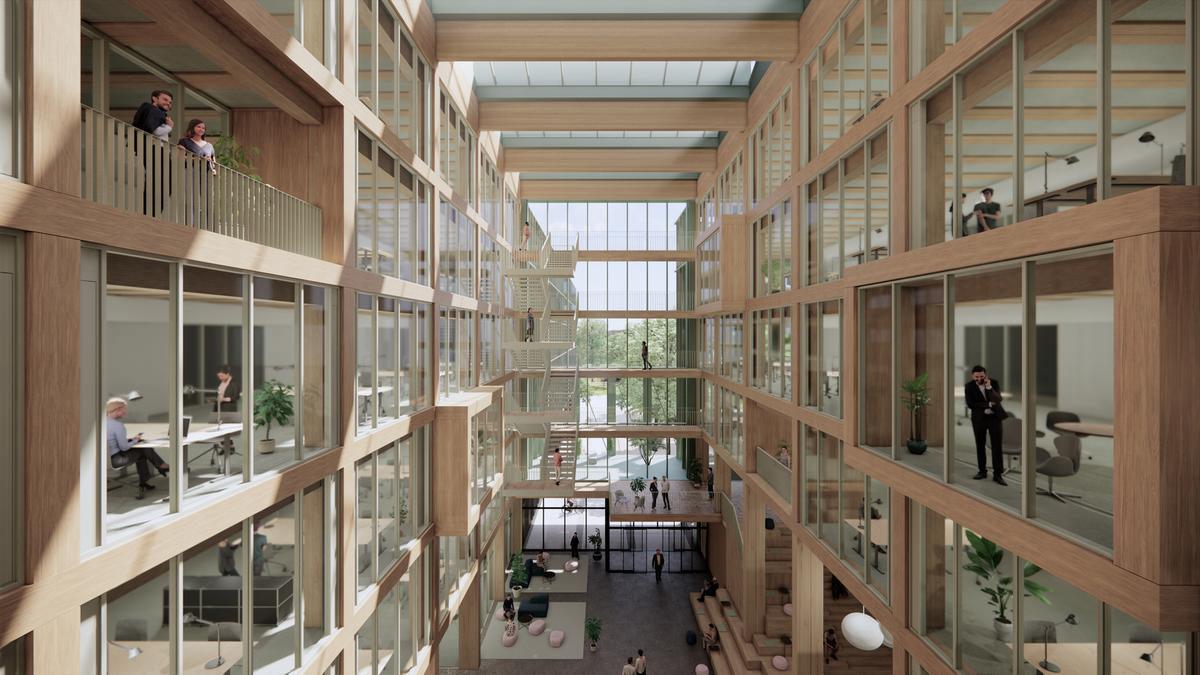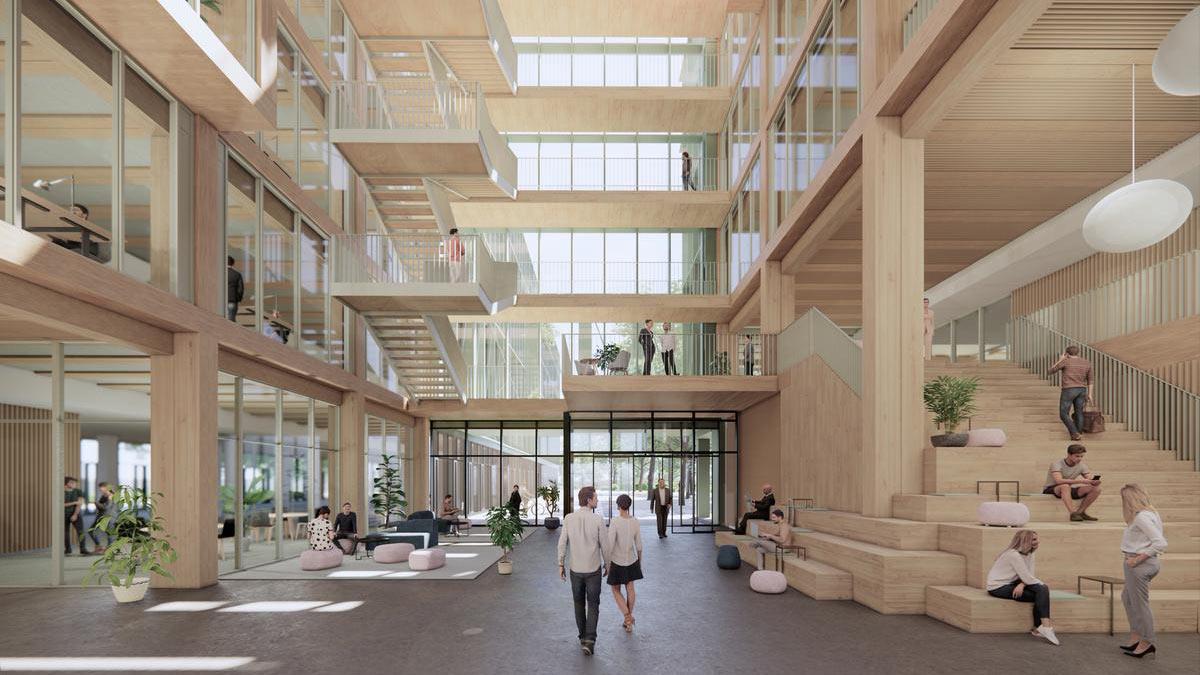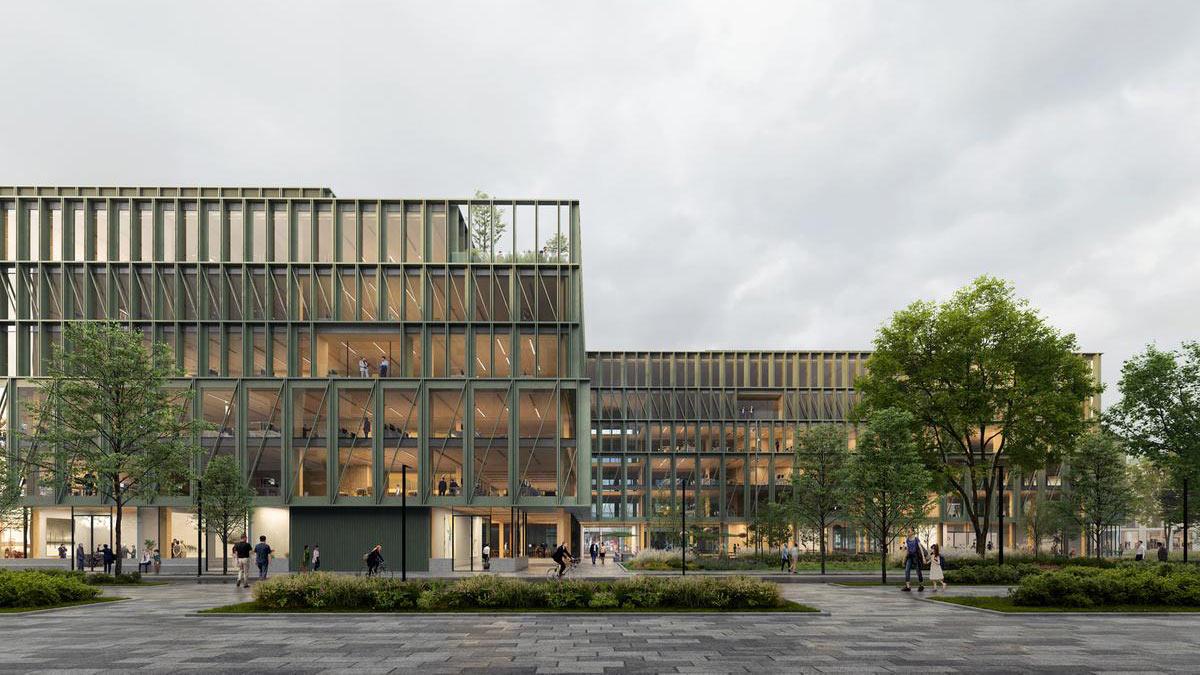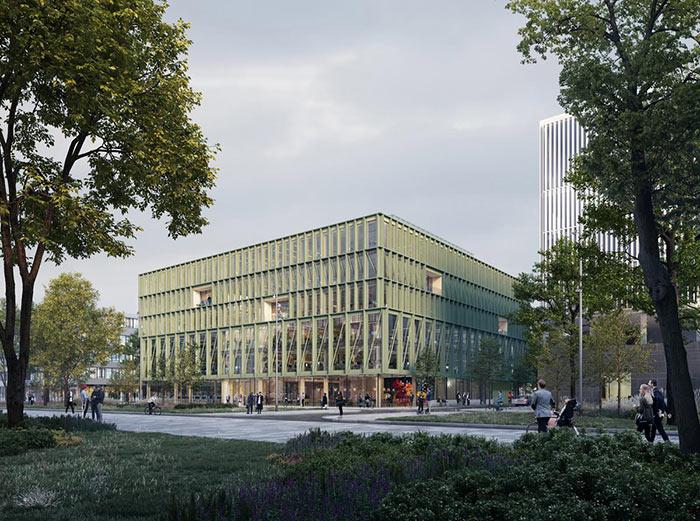Timber engineering with industrial chic
Its facade is made from recycled aluminium, and the load-bearing structure follows a hybrid timber design. Named i8, this office building in Munich’s Werksviertel is committed to decarbonization and forms a link with the neighbourhood’s industrial past.
The site behind the Munich East railway station “Ostbahnhof” was once home to the headquarters of German food manufacturer Pfanni. For almost 70 years, the company produced dumpling mixtures and ready-made potato products here. Following interim use as various kinds of cultural venue, the city’s latest hotspot is now thriving. The Werksviertel-Mitte district offers rooftop bars, galleries and container eateries, as well as MVRDV’s Werk 12, which was chosen as Germany’s best new building in 2021. Looking out from the Umadum Ferris wheel, there are sweeping views that include the Werk3 rooftop terrace, where sheep have grazed on an urban rooftop meadow since 2017.
Sustainable architecture from Denmark
Just around the corner, the new iCampus quarter is being developed. This project is described as a “forward-looking work-life neighbourhood” with “respect for preservation and the surrounding area”. Built according to an overriding master plan, the cluster consists of seven units. One of these is the i8, whose innovative timber hybrid design was developed by R&S Immobilienmanagement GmbH in cooperation with Danish timber construction experts C. F. Møller Architects.
It was their residential building Kajstaden in Sweden that marked the beginning of a new generation of mass timber high-rises. And their project Fjordporten – currently being built in Oslo – is a spectacular office tower and the result of pioneering work in constructional timber design.
Smart building technology teams up with timber
A sustainability concept was again the focus of the architects’ design for the i8 in Munich’s Werksviertel. As the name of the quarter suggests, at the iCampus the spotlight is on networking and state-of-the-art technologies. After all, intelligent building technology can optimize energy needs in real time depending on how the individual rooms are being used.
By replacing concrete and steel in load-bearing structures with wood, it will be possible to reduce the carbon content of buildings by 30 to 50 percent.
Mads Mandrup Hansen, partner and architect at C.F. Møller Architects
In order to keep the carbon content of the building as low as possible, the architects and developers have chosen a composite of concrete and prefabricated timber elements. As the latest studies have shown, the level of emissions resulting from production of conventional construction materials often exceeds the equivalent from 50 years of building operation.
“By replacing concrete and steel in load-bearing structures with wood, it will be possible to reduce the carbon content of buildings by 30 to 50 percent,” explains Mads Mandrup Hansen, partner and architect at C.F. Møller Architects.
Office building with residential flair
Probably the most striking element of the design is the central atrium where all levels and units come together. Its loggias, plenty of daylight and many wooden surfaces give the office space here a very homely feel. “With the ‘i8’ we are combining the principles of healthy living with the concept of agile and creative work,” Mandrup remarks.
With the ‘i8’ we are combining the principles of healthy living with the concept of agile and creative work.
Mads Mandrup Hansen, partner and architect at C.F. Møller Architects
The entire office complex is designed to allow flexible use of space and the ability to adapt to user needs. The description of the winning entry for the architecture competition explains: “The floor plan places a strong emphasis on flexibility and rooms that can be easily converted into individual offices, open-plan offices or a combination of both concepts.”
Reference to its industrial past
The open architecture is designed to encourage a high level of interaction among the building’s users and offer possibilities for co-working and networking. Relaxing lunchbreaks can be enjoyed on the rooftop terrace with its view of the Alps, or in a small park nearby in the shade from the trees. The Werksviertel-Mitte provides the necessary variety with its broad spectrum of food outlets.
The i8 looks reticent, yet also memorable. “As an optimal complement to the wooden elements and contributing a particularly natural effect, the façade of the ‘i8’ will be made of recycled aluminium in a muted shade of green,” the project description reads. This serves as protection against the sun, and its striking structure is also a reference to the Werksviertel’s industrial past.
Text: Gertraud Gerst
Translation: Rosemary Bridger-Lippe
Visualizations: C. F. Møller
